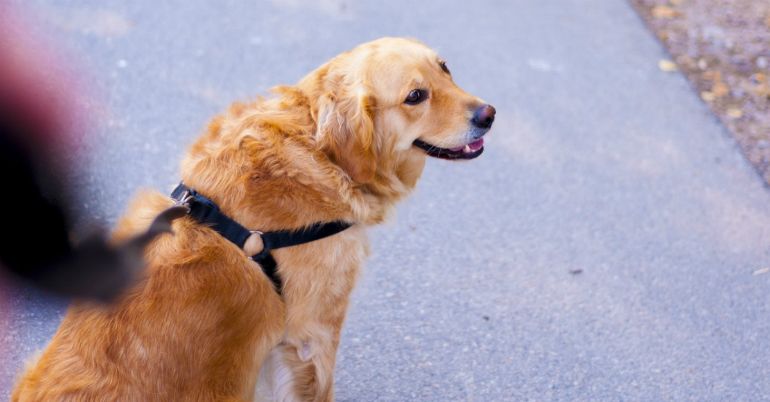Share:
Take it offline!
This Education in Motion resource is also available as a printable PDF.
Download PDF
Dogs can be trained to assist people with disabilities, helping their owners in their daily lives to become much more than just pets. In many cases they can help them overcome physical and psychological problems as well as providing faithful companionship.
Assistance dogs serve to help people overcome the limitations that may be imposed on them by a particular disability or by the challenges of navigating around their environment. In theory, anyone with a physical or mental condition that substantially hinders their ability to lead a fully independent life can adopt one of these assistance animals.

Assistance dog qualities
Assistance dogs do not necessarily have to be of a particular breed but ideally they should be obedient, calm, affectionate and reliable enough to interact in social environments without issue. Other sought after qualities in assistance animals are:
- High learning capacity
- Non-aggressive demeanour
- Good reactions to sounds and signals
Amongst some of the most notable and commonly selected breeds for assistance and therapy dogs are the Golden Retriever, the Labrador, the Belgian Malinois (intelligent and very physically able) and the Alaskan Malamute (loyal, hard-working and very gentle).
The training process for assistance dogs
The training period for assistance and therapy dogs is usually long, consisting of a minimum of between 6-12 months. The animals are generally selected as puppies and adopted by their owner once they are in training or even when they are completely trained, although in some cases the training can be applied to an animal already owned by a person with disabilities.
Some associations also work with abandoned or guard dogs if they possess the necessary traits that will allow them to be trained as assistance dogs.
Assistance dog training consists of teaching them how to undertake tasks to help their future owner in their daily lives, such as fetching items, opening or closing doors, ringing doorbells, switching lights on or off, opening and closing drawers or even helping a person to remove clothing or shoes. They are also trained to protect their owner, to fetch help or to pull a wheelchair for short distances.

Types of assistance dogs according to disability
- Assistance dogs for people with physical disabilities. Trained to retrieve items from the floor, turn on switches, open and close doors and drawers etc.
- Assistance dogs for people with hearing impairments. Specially trained to warn its owner of various sounds (doorbells, telephone, a baby's cry, voices, alarms, alarm clock etc.) and to lead them to the source of the sound.
- Assistance dogs for the visually impaired. Also known as guide dogs.
- Assistance dogs for alerts and emergencies. Trained to keep elderly people company or assist those with conditions such as diabetes or epilepsy, and to fetch help if necessary.
- Assistance dogs for people with autism. These are a type of therapy dog able to avoid or to reduce the stereotypical and disruptive behaviours associated with autism. These animals form a strong and effective bond with their owners, allowing them to improve communication as well as providing sensory stimulation and safety.
- Dogs for animal assisted therapy (AAT). This type of treatment includes forming a person-animal bond with for therapeutic and/or educational purposes. Therapy dogs are used for people with mental disorders or intellectual disabilities, as well as those in nursing homes, social care or drug treatment centres.
How can I apply for an assistance dog?
Before applying for an assistance dog, it is seriously advisable to weigh the impact that having a new pet will have on a person's day to day lifestyle. A high percentage of disabled people opt for therapy dogs as they not only provide assistance, but also companionship.
The application process for acquiring assistance dogs is often long owing to high demand. The associations responsible for training these animals assess each case on an individual basis so as to match the right pet for each person as required. In some cases, joint training sessions are carried out after an animal has been assigned in order to assess mutual suitability. This follow-up may last several months.
In the case of children, a minimum age is usually required for the dog to recognise them as their owner. It is also important that the child can assume some responsibilities for their dog, such as taking them out for walks or brushing them.
If you have found this article helpful and would like to find other ways of improving your mobility, visit the Sunrise Medical blog for more great content. Visit our website to take a look at our mobility solutions and our range of manual and electric wheelchairs. Good equipment makes all the difference.